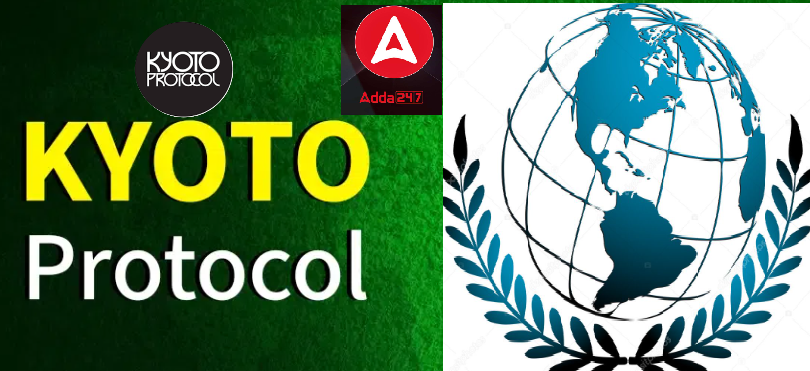Table of Contents
The Kyoto Protocol is an international treaty adopted in Kyoto, Japan, in 11 December 1997, focussing to reduce gases that cause global warming. It came into force in 2005 and set a goal for 41 countries and the European Union to reduce six greenhouse gases by 5.2% below 1990 levels during 2008-2012.
The latest 2024 Kyoto Protocol report highlights the achievements and challenges:
- Emission Reductions: Developed countries reduced emissions by 22% on average compared to 1990 levels during the second commitment period (2013-2020).
- European Union: The EU achieved a 23% reduction in emissions.
- Top Performers: Ten countries, including nine EU members and the UK, reduced emissions by over 30%.
- Challenges: Seven countries saw an increase in emissions.
- Future Goals: Progress made sets a strong base for more ambitious targets under the Paris Agreement, aiming to limit global warming to 1.5°C.
What is the Kyoto Protocol?
The Kyoto Protocol builds on the United Nations Framework Convention on Climate Change by requiring industrialized countries and economies in transition to limit and reduce greenhouse gas emissions based on individual targets. Unlike the Convention, which only asks for policies and reporting, the Kyoto Protocol sets binding targets for these countries.
It focuses on developed nations, holding them to stricter targets due to their historical responsibility for high greenhouse gas emissions. In Annex B, the Protocol sets emission reduction targets for 37 industrialized countries and the EU, aiming for a 5% reduction from 1990 levels during the 2008–2012 period.
History of the Kyoto Protocol
Scientists raised global awareness about the dangers of global warming in the 1960s and 1970s. In 1988, the UN created the Intergovernmental Panel on Climate Change (IPCC), which confirmed that global warming was real and needed urgent action. This led to the creation of the United Nations Framework Convention on Climate Change (UNFCCC), signed at the 1992 Earth Summit in Rio.
The Kyoto Protocol, adopted in 1997, set binding targets for 37 industrialized countries and the EU to reduce greenhouse gas emissions. It entered into force in 2005. The protocol addressed emissions from international aviation and shipping through the International Civil Aviation Organization (ICAO) and the International Maritime Organization (IMO). However, the Paris Agreement in 2015 did not directly mention IMO.
Greenhouse Gases under the Kyoto Protocol:
- Carbon dioxide (CO2)
- Methane (CH4)
- Nitrous oxide (N2O)
- Hydrofluorocarbons (HFCs)
- Perfluorocarbons (PFCs)
- Sulphur hexafluoride (SF6)
Objectives of the Kyoto Protocol
The Kyoto Protocol’s objectives were to:
- Reduce greenhouse gas emissions: Set binding targets for 37 industrialized countries and the EU to reduce emissions by 5.2% below 1990 levels.
- Stabilize greenhouse gas concentrations: Prevent dangerous human interference with the climate system by stabilizing GHG levels in the atmosphere.
- Minimize impacts on developing countries: Established the Clean Development Mechanism (CDM) to allow developed countries to invest in emission-reduction projects in developing countries.
- Ensure protocol integrity: Included systems for accounting, reporting, and review to maintain credibility.
- Enable international emissions trading: Allowed countries to trade carbon credits to meet their emission targets.
- Promote Sustainable Development: Encourage developed countries to support developing countries in achieving emission reductions and sustainable development through mechanisms like the Clean Development Mechanism (CDM).
- Establish Market-Based Mechanisms: Create flexible mechanisms such as emissions trading, carbon credits, and joint implementation to help countries meet their targets in a cost-effective way.
- Ensure Global Cooperation: Foster international cooperation among nations to address climate change and encourage the participation of both industrialized and developing countries in global efforts.
- Support Technology Transfer: Facilitate the transfer of clean and efficient technologies from developed to developing countries to help reduce emissions globally.
Mechanisms of the Kyoto Protocol
The Kyoto Protocol introduced three market-based mechanisms to help countries meet emission reduction targets:
Clean Development Mechanism (CDM): This allows developed countries to fund emission-reduction projects in developing countries. In return, they receive carbon credits that count toward their emission reduction targets. For example, Australia might fund a solar project in India and earn credits to meet its Kyoto goals.
Carbon Emission Trading: Carbon credits are certificates that allow a country to emit one tonne of CO2. Countries that exceed their emission limits can buy credits from those emitting less. This system helps lower overall emissions by allowing trade between countries. India, as a developing country, can sell carbon credits and earn money.
Joint Implementation: A developed country can fund an emission-reduction project in another developed country to earn emission reduction units (ERUs). These units can be used to meet their Kyoto target. This mechanism allows countries to meet their commitments in a cost-effective way while benefiting from investment and technology transfer.
Meetings Since 2005 Also Serve as CMP for Kyoto Protocol
At the third session of the Conference of the Parties (COP 3) in Kyoto, Japan. The COP meetings are held yearly where countries of the UN Framework Convention on Climate Change (UNFCCC) discuss climate change progress and solutions. Since 2005, these meetings also serve as the “Conference of the Parties Serving as the Meeting of Parties to the Kyoto Protocol” (CMP).
Here are some past COPs:
- 2024: Bonn Climate Change Conference
- 2023: UN Climate Change Conference in Dubai
- 2022: Sharm El Sheikh Climate Change Conference
- 2021: Glasgow Climate Change Conference
- 2019: UN Climate Change Conference in Madrid
- 2018: Katowice Climate Change Conference
- 2017: UN Climate Change Conference
- 2016: Marrakech Climate Change Conference
- 2015: Paris Climate Change Conference
- 2014: Lima Climate Change Conference
India’s Role in the Kyoto Protocol
India ratified the Kyoto Protocol in 2002 after 77 countries had done so. As a developing country, India was not required to reduce greenhouse gas emissions but sought to benefit from technology transfer and foreign investments. This was expected to boost renewable energy, energy efficiency, and afforestation projects. India has remained committed to the protocol and has actively participated in talks for future emission reduction targets for developed countries. India, along with other nations, has proposed a 40% emissions reduction by 2020 for Annex-I countries. India has also been a major beneficiary of the Clean Development Mechanism (CDM) and supports its continuation.
Achievements of 1997 Kyoto Protocols
The Kyoto Protocol was the first major international treaty to require emission reductions:
- It established emissions trading and CDM projects, boosting investments in green technologies, especially in developing countries.
- The treaty only required wealthier countries to cut emissions, which caused controversy.
- This issue was addressed in the 2015 Paris Agreement.
- Over the past two decades, climate science has advanced, with the UNFCCC playing a key role in raising awareness and developing strategies.
- The UNFCCC created programs like the National Adaptation Programmes of Action (NAPAs) and the Nairobi Work Programme.
- It introduced the Clean Development Mechanism (CDM), allowing developing countries to earn credits for emission-reducing projects.
- The UNFCCC has also promoted international collaboration on technology and financing to help developing countries tackle climate change.
Failures of the 1997 Kyoto Protocol
The Kyoto Protocol faced challenges like non-participation and withdrawal of major emitters, such as the U.S., and had limited impact due to a lack of binding commitments from developing nations.
- It excluded harmful pollutants like those from vehicles and power plants, which are major environmental concerns today.
- The pace of change was slow, with challenges in getting countries like Russia and the U.S. to ratify the agreement.
- The objectives were often seen as unachievable, with global temperatures rising by 1°C and the Paris Agreement unlikely to meet the 2°C target.
- Low-lying nations pushed for a tougher goal of limiting warming to 1.5°C due to rising sea levels.
- Financial constraints were a concern, with some countries believing the $100 billion/year funding pledge was insufficient.
- The U.S. withdrawal from the Paris Agreement in 2017 and blocking additional funding created further challenges.
- The Paris Agreement lacks a binding enforcement mechanism, with compliance based on a “name and shame” system.
Doha Amendment to the Kyoto Protocol
The Doha Amendment to the Kyoto Protocol was adopted on December 8, 2012, in Doha, Qatar, for a second commitment period from 2013 to 2020. The amendment entered into force on December 31, 2020, after 147 Parties accepted it.
Key points of the amendment include:
- New commitments for Annex I Parties to reduce GHG emissions from 2013 to 2020.
- A revised list of greenhouse gases to report.
- Updates to articles of the Kyoto Protocol related to the second commitment period.
- During the first commitment period, 37 industrialized countries and the European Community pledged to reduce emissions by 5% below 1990 levels. In the second period, Parties agreed to reduce emissions by at least 18% below 1990 levels.
The Kyoto Protocol also introduced flexible market mechanisms to help countries meet their targets:
- International Emissions Trading
- Clean Development Mechanism (CDM)
- Joint Implementation (JI)
- These mechanisms allow for emissions reductions in the most cost-effective places, like developing countries, and encourage green investments and cleaner technologies.



 TSPSC Group 1 Question Paper 2024, Downl...
TSPSC Group 1 Question Paper 2024, Downl...
 TSPSC Group 1 Answer key 2024 Out, Downl...
TSPSC Group 1 Answer key 2024 Out, Downl...
 UPSC Prelims 2024 Question Paper, Downlo...
UPSC Prelims 2024 Question Paper, Downlo...





